From its small beginnings making electric lap steels in Leo Fender’s California radio shop during the early 1940s, Fender has grown into a global brand that not only encompasses a multitude of musical instrument marques, including Squier, Gretsch, Guild, Jackson/Charvel, Tacoma and SWR, but has even branched out into areas as disparate as car audio, in collaboration with Volkswagen, and retro styled tennis shoes.
It’s hard to imagine now, but at the end of the 1970s, the future looked bleak for Fender. There was an often-justified perception of declining quality over the previous 15 years since Leo Fender had sold the company bearing his name to the U.S. broadcasting company CBS. Adding to Fender’s troubles was increased competition from inexpensive imported guitars, a large percentage of which were made in Japan at the time.
And while the American-made guitars were seen as getting progressively worse, the Japanese-made instruments were getting better. In fact, companies such as Tokai Gakki and FujiGen Gakki, which also made Ibanez guitars, were making instruments that were extremely close replicas of the Stratocasters and Telecasters made by Fender during its halcyon days of the late ‘50s and early ‘60s.
At the beginning of the 1980s, however, two significant and interrelated events occurred that propelled Fender’s transformation into a worldwide brand: the introduction of the Squier subsidiary and the creation of Fender Japan Ltd.
An International Perspective
In 1981, CBS brought in a new a new management team to turn Fender around. The three executives, John McLaren, William “Bill” Schultz and Dan Smith, were music industry veterans who had previously worked for Yamaha Musical Instruments’ North American operation. The three knew that they had a tough job ahead of them.
“We were brought in to kind of turn the reputation of Fender around, and to get it so it was making money again,” Smith said, as quoted in “The Fender Book,” by Tony Bacon and Paul Day. “It was starting to lose money, and at that point in time everybody hated Fender. We thought we knew how bad it was. We took for granted that they could make Stratocasters and Telecasters the way they used to make them, but we were wrong.”
The new management team decided to fix Fender’s fortunes by using two different, but complementary approaches:
First, they would tackle declining quality by significantly upgrading Fender’s California production facilities and implementing a new quality control program. At the same time, Fender decided to take the fight against inexpensive imported copies to the source and confront the makers of copycat guitars on their home ground by manufacturing guitars in Japan.
This was a bold move; essentially Fender would be creating its own copies and competing with itself. However, this was not the first time this approach to competing with low-cost foreign imports had been tried; it could be argued that Gibson had done something similar with the Epiphone brand after moving production overseas in the late ‘60s after ceasing the manufacturing of Epiphone instruments in Kalamazoo, Michigan. The big difference here was that Fender was not only intending to make inexpensive instruments for the American market, the company also intended to make high-quality guitars for the domestic Japanese market and to compete with the Japanese makers on their home turf.
Repurposing the Squier Brand
It was clear that the way forward for Fender was to take on the makers of knock-off guitars by introducing their own budget models. But the challenge was how to do that while protecting the image of Fender as a high-end guitar brand. The answer was to market them under the Squier brand, which was the name of a string manufacturer and one of the first to make strings specifically for electric guitars.
Fender had bought Squier in the ‘60s and Fender continued to sell strings under that name until 1972. Marketing electric guitars under the Squier name would enable the company to distance itself from the venture if it failed while protecting the prestige of the Fender brand.
The Japanese car company Nissan had done something similar in the 1960s when it sold cars in the American market under the Datsun marque. There was a slight controversy surrounding the new guitars when early ‘80s rocker Billy Squier filed a lawsuit against Fender claiming it was unfairly using his name.
These new Squier instruments came in two basic flavors: budget/student instruments, such as the “Bullet” series (more on these in part two), and lower-cost yet identical-looking versions of standard Fender models, especially Stratocasters and Telecasters.
Fender Partners with FujiGen Gakki and Kanda Shokai
As noted earlier, one of the big challenges facing Schultz and the new Fender management team was increasing the quality of the American-made instruments.
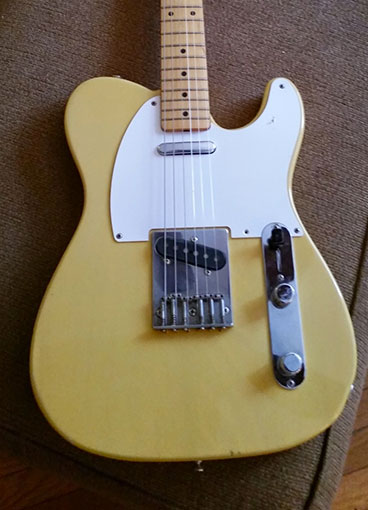
One of the first things they did was to virtually shut down Fender’s Fullerton plant to revamp manufacturing. This left a problem: where to make the guitars? The answer was to move production to Japan, to some of the very same companies which had been making Fender copies.
And so, on March 11, 1982, Fender Japan Ltd. was created. The new company was a joint venture between Fender and two Japanese distribution companies, Kanda Shokai and Yamano Music. Yamano had strong ties with Fender, having been a distributor of Fender products since the 1960s. Fender was the senior partner in the new company, having three board members out of six total, and owning 38 percent of the stock. The actual instruments were built by FujiGen Gakki, which as previously noted, also was the maker of Ibanez guitars.
FujiGen Gakki (the word "Gakki" is Japanese for musical instrument) was founded in 1960 and made their first electric guitars in 1962, although like many Japanese makers, they originally specialized in classical guitars. That changed in 1965 when the popular surf rock group, the Ventures, toured Japan. The Ventures had an effect in Japan similar to that which the Beatles had in America; suddenly everybody was interested in playing electric guitar, and FujiGen began to focus more on electric guitar production to help meet the demand. By 1970, the company had started to specialize in making instruments for other companies’ brands, and by the early 1980s was producing up to 14,000 electric guitars per month.
Although Japan has had a musical instrument industry since the 1880s, in the United States the country had been better known for inexpensive consumer goods — such as the ubiquitous transistor radios of the 1960s — than for high-quality musical instruments. Consequently, there were doubts back in Fullerton about the quality of the new Japanese Fenders, but those doubts were soon dispelled when the Japanese instruments arrived in California.
Marketing executive Dan Smith, quoted in “The Fender Book” recalled, “Everybody came up to inspect them and the guys almost cried, because the Japanese product was so good — it was what we had been having a hell of a time trying to do.”
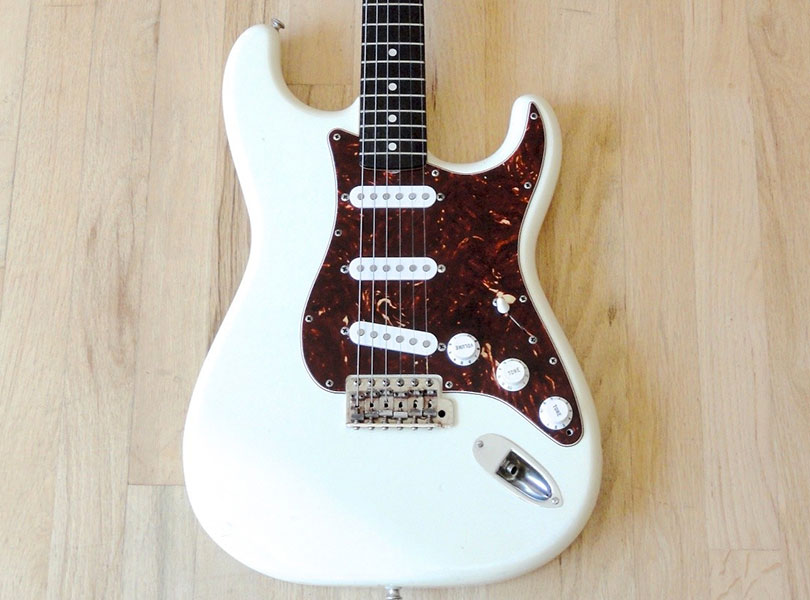
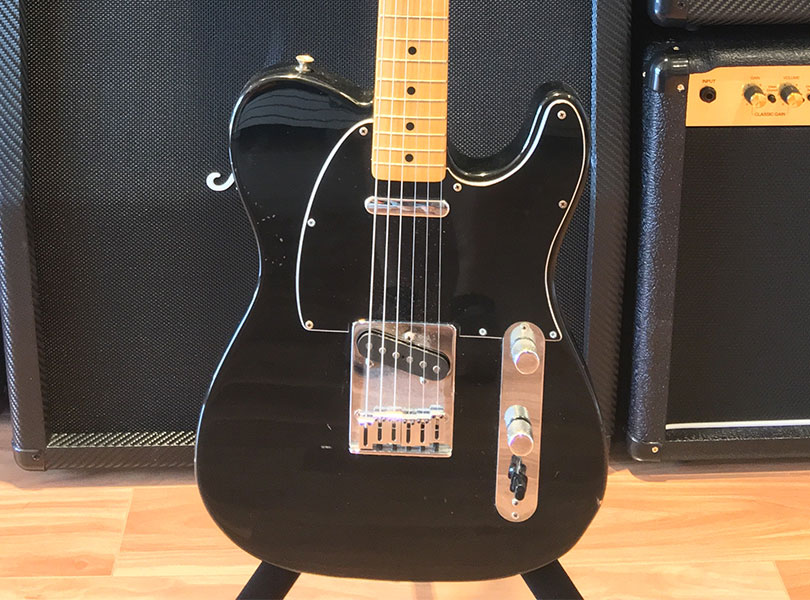
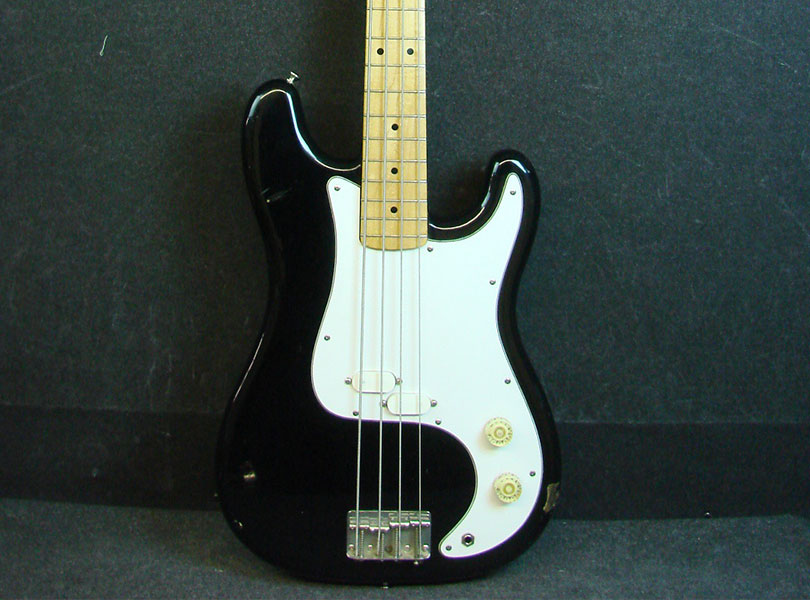
If at one time an inexpensive electric guitar was synonymous with a low-quality one, the new Japanese instruments showed that this was longer the case. In fact, during the late 1980s and early 1990s, it was generally acknowledged that the build quality of Fender instruments made in Japan equaled, or even succeeded their stateside counterparts.
The first of the FujiGen Gakki-made Squier guitars were shipped to European destinations: Germany, the Benelux countries, France, Spain, Sweden, Switzerland and the UK. They were especially popular in the UK, due to their excellent value for money. The price of a new Squier electric guitar was about the same as a copy, and just slightly more than half the price of its U.S.-made Fender equivalent.
Fender: For Sale
Fender faced yet another crisis in 1984; CBS put Fender up for sale. Fender President William Schultz led a consortium to buy the company, but unfortunately the sale did not include the recently upgraded Fullerton plant, any of the guitar making machinery, or any of the then-current patents. This left the Fender company with no manufacturing capability in the United States. The solution was to turn to Fender Japan to build all of the company’s guitars, which would be the case for a period of some months. Fender was able start a new factory in Corona, California, about 20 miles away from Fullerton, by the end of 1985, but the vast majority of Fender guitars sold in 1985 were made in Japan.
Although Fender used Fender Japan to replace its temporarily disrupted manufacturing capacity, one of the most significant results of the enterprise was turning Fender into a truly multinational company, rather than just a guitar maker that outsourced musical instruments from overseas. As well as making budget instruments and vintage copies, Fender Japan began to design and market instruments that were not based on earlier Fender designs, such as the Katana series and Performer series. They also began to make the “Super Strat” style guitars that were fashionable in the mid-80s. More on these guitars and others in part two.
Changing market conditions recently have meant the end of the three-way partnership of Fender Japan Ltd. Although Fender still manufactures guitars in Japan, Fender Japan Ltd. as an entity ceased to exist on March 31, 2015. At the beginning of April that year, Fender Musical Instruments (Japan), a wholly owned subsidiary of Fender Musical Instruments, assumed responsibility for the Japanese Fender instrument manufacturing.
The significance of Fender Japan as a business venture is probably even more important than the instruments it produced. It represents an American musical brand name going truly worldwide with both manufacturing and marketing, something that Leo Fender would have probably not been able to conceive of while working with Doc Kauffman in his California radio shop in the 1940s. Fender Japan was instrumental (pun intended) in Fender becoming the global brand that it is today.
Squier JV Series
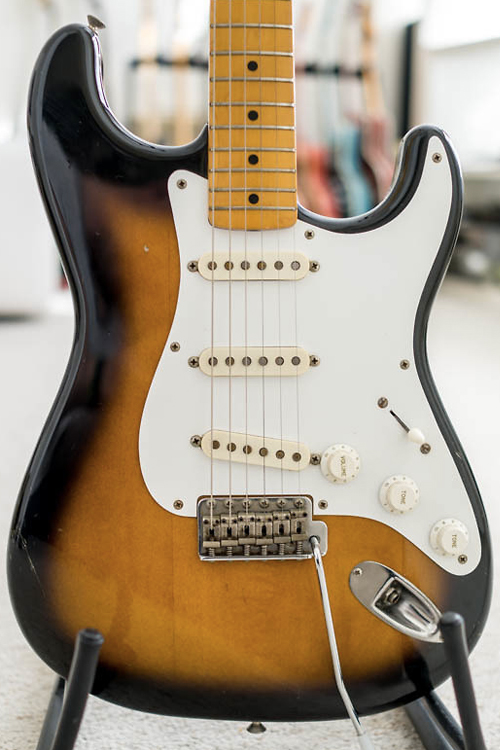
The earliest Fender Japan instruments can be divided into two basic categories; Squier-branded guitars that were built for export, primarily to the United States, and guitars made under the Fender brand that were intended for the Japanese domestic market.
The earliest Japanese Squiers featured a large "Fender logo" on the instrument headstock in the traditional place and a much smaller "Squier" logo underneath.
This arrangement was soon reversed, with subsequent instruments bearing a large "Squier" logo with a smaller "Fender" underneath.
The first Fender Japan instruments produced for domestic consumption were closely based on Fender instruments of the late 1950s and early 1960s and are commonly known as the "JV" series, due to their serial numbers beginning with the letters JV.
These JV were known for their particularly high quality, often incorporating American-made pickups and offering period-correct details, such as cloth-covered wiring and vintage style tuners.
Squier SQ Series
The first Squier guitars created for export to the U.K., Europe and U.S. were actually based on one of Fender’s least popular Stratocaster models, the “three-bolt” style Stratocaster.
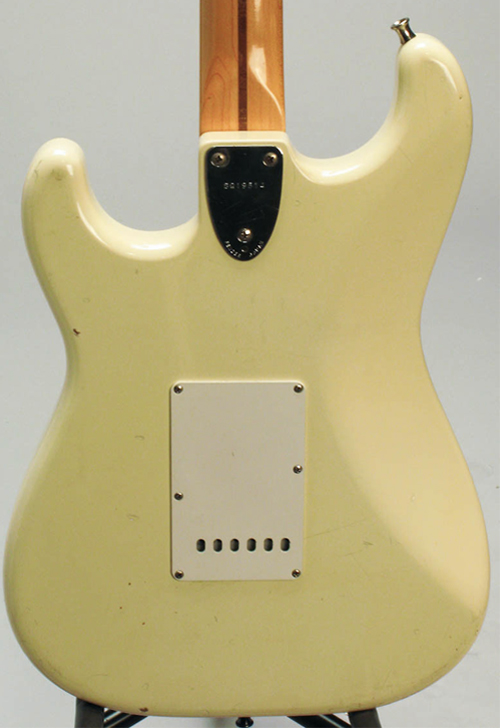
In 1971, Fender modified the way the neck of the Stratocaster attached to the body of the guitar, going from four wood screws and a rectangular plate to a system with a triangular plate and three screws with an additional small hex-key adjustable “micro-tilt” screw, which could be used to control the angle of the neck relative to the body.
Although the three-bolt system was innovative and allowed the adjustment of the neck without removing it from the body, the Fender version was never favored by players due to perceived problems with stability and the fit of the neck in the neck cavity. And yet this was the instrument that Fender decided to use as a basis for the first Japanese-made Fenders to be sold in the United States. However, the FujiGen Gakki-made version of the instrument overcame the problems the American original with improved mechanical tolerances and quality control.
The Squier three-bolt Stratocaster was based on a 10-year-old design, but it was never conceived of as a "vintage" instrument in the way that the JV series was. Released at the end of 1983, these Squier Strats were sold in the United Kingdom and Japan as the “Popular Stratocaster,” and priced at an economical $169. Fender heavily promoted the new instrument, even producing a commercial for the then-new MTV during the 1983 Christmas season.
Squier Super Strats: More than Just a Double Whammy
If there is one style of electric guitar that defined the ‘80s, it’s the Super Strat. These instruments, first seen in the early 1980s and still popular today, were based on the shape of the Stratocaster, but vary greatly in both construction and electronics.
Despite the name, the original Super Strats were not made by Fender but were instead developed by makers such as Jackson, Charvel and Kramer. Although there were many variations, Super Strats almost always had two defining features.
The first defining feature is a humbucking pickup, typically in the bridge position, though Fender instruments are, of course, known for mainly using single coil pickups. The most common configuration was a humbucker and one or two single coils (HSS). But other combinations, such as a single humbucking pickup (H) or two humbucking pickups (HH), also are found on Super Strats.
The second defining feature of a Super Strat is a heavy-duty tremolo system, often modeled on a Kahler or Floyd Rose type, typically with a locking nut. This allowed playing in the “divebomb” fashion popularized by Eddie Van Halen in the late ‘70s and early ‘80s. In the mid-1980s, Fender introduced a series of more than 10 new guitar models based on the Super Strat concept.
Collectively known as the Contemporary Guitars, these instruments featured 22 fret necks, rather than the 21 traditionally found on a Stratocaster, a variety of pickup combinations, and came with one of three different types of vibratos.
Please note that Fender’s terminology regarding the words “vibrato” and “tremolo” has caused confusion for over 50 years; Fender called their vibrato units “tremolo” and their tremolo units on their amplifiers “vibrato.” To be clear, “tremolo” refers to a rapid repeating change in amplitude or volume, while “vibrato” is a repeating variation in pitch.
While very different in design and appearance from each other, all three systems featured snap-in control arms of a heavier construction than the traditional screw-in Stratocaster tremolo arm. This reflected their intended use for the heavy “divebomb” style of playing then in fashion. Although the System 1 and System 3 both bore strong resemblances to contemporaneous vibrato units made by Floyd Rose and Kahler, all of these vibratos were in fact made by Schaller.
Fender System 1, 2, and 3 Tremolo Systems
The System 1 Tremolo was, in essence, a simplified version of a Floyd Rose tremolo. Although it looked very different, in practice it functioned in a manner similar to a Gibson Tune-o-matic-style bridge, in that it was possible to intonate each string individually, but not to individually adjust the string heights as was typical on traditional Stratocaster vibratos. A behind-the-nut string-locking mechanism was mounted behind the bridge to help keep the guitar in tune.
The System 2 actually was the first of the three systems to be developed. This was originally marketed as the "FreeFlyte" tremolo and was used on the American-made “Elite” series of Stratocasters and Telecasters in 1983 and 1984. Japanese-made guitars with a System 2 tremolo typically did not come with a locking nut. Although the System 2 was not very popular with players — as it developed a reputation for metal fatigue at the fulcrum point — it had some very good design features. One in particular was that it could be set so that the cast-metal block of the unit sat firmly against the top of the guitar when the unit was not being depressed, which helped to promote tuning stability and sustain.
Interestingly, the first Stratocasters were set up in a similar way: with the bridge played lying flat against the top of the guitar rather than “floating” when the unit was at rest.
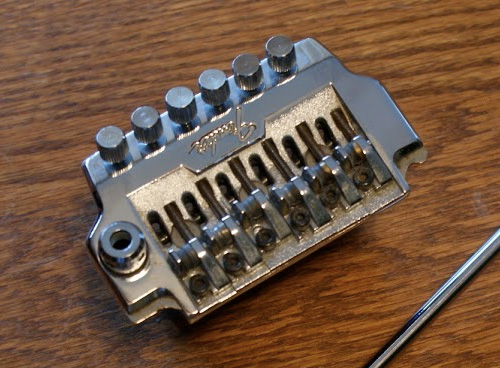
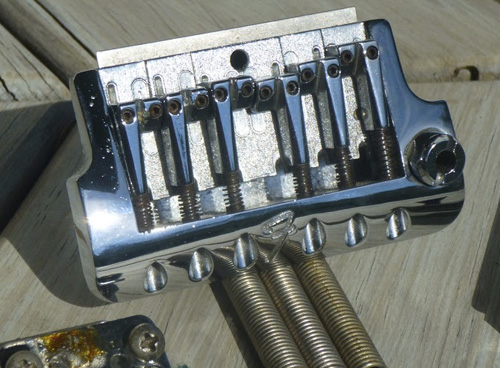
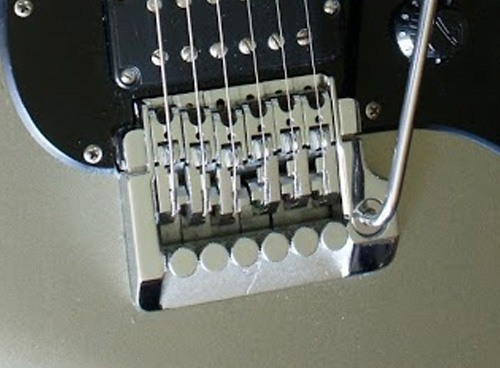
This version, which was something of a hybrid of a Floyd Rose and a Kahler vibrato, was the most deluxe model offered on the Contemporary series. It was also the most complex of the three; its owner’s manual included included 14 pages of detailed setup instructions.
One interesting feature of the System 3 was that it was designed to be quickly locked down and function as a fixed-tailpiece instrument. The behind-the-nut locking mechanism had a very clever clamp-operated quick-release mechanism.
The Squier Katana and Performer
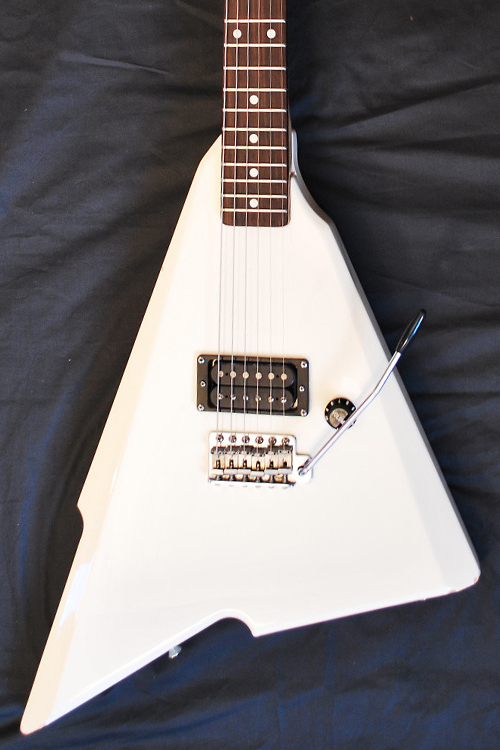
Designed by Fender marketing director Dan Smith, the Fender Katana is in some respects the most unusual guitar the company ever produced. It featured some very un-Fender-like elements, such as a set-neck construction, two humbucking pickups and a striking wedge-shaped body very much inspired by Charvel/Jackson “shark fin” guitars popular in the 1980s. Although only a small number of the Fender version of this guitar were made, Squier produced a bolt on neck version of this instrument and a matching bass that sold reasonably well.
Created by Fender’s in-house designer John Page, who designed the Bullet line of instruments detailed below, the styling of the Performer guitar and bass was influenced by the angular design of guitars by BC Rich and Jackson that were finding favor amongst metal guitarists of the early-to-mid 1980s. Although the Performer was a departure from typical Fender design, the guitar still drew from its Fender predecessors. The instrument bears more than a passing resemblance to the Fender Swinger guitars, which were built from unused parts meant for other instrument models, of the late 1960s.
Both the Katana and Performer models were very short lived, each being released in 1985 and discontinued by 1987.
Squier Bullets
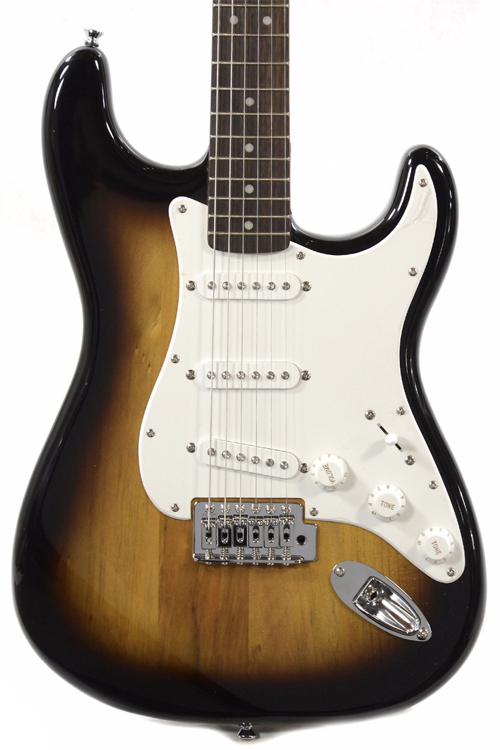
Despite Fender’s success with Fender Japan, in 1988 the company added production capability in Korea, which had lower labor costs, and launched the “Bullet” line of instruments, which was aimed at the student market. The Bullets were far from Fender’s first foray into low-cost instruments — Fender had worked this territory before with models such as the Duo-Sonic in the ‘50s and the Mustang and Musicmaster in the ‘60s and ‘70s. Although the vast majority of Bullet guitars and basses were made in Korea, the line was designed in the United States by Fender employee John Page and originally was built in Fender’s Fullerton plant.
What makes the Bullet instruments unique is that every aspect of the design was intended to reduce manufacturing costs while still delivering a high-quality instrument. A good example of the design philosophy employed in the Bullet is its metal pickguard, which provided electronics shielding and also doubled as an anchor for the bridge saddles. Two versions of Bullet bass guitars were also made, a long- and a short- scale instrument. The short-scale instrument, with its low price and easier-to-handle string length, was particularly popular with guitarists for use in their home studios. The introduction of inexpensive cassette-based four track recorders, such as the Fostex X-15 multitracker, was making home recording studios popular, and many short-scale Bullet basses were bought by guitarists wanting to expand their arsenals.
Squier Vista Series
In 1996 Squier introduced the Vista Series, which unlike previous Squiers, were not created as budget guitars and were largely original designs. Three Vista models were produced; the Jagmaster, the Super Sonic, and the Venus six- and 12-string guitars.
The Squier Jagmaster
The Jagmaster is loosely based on the Fender Jaguar and Jazzmaster, but with Gibson-style humbucking pickups, a Stratocaster-style vibrato, simplified electronics and, on the Vista series version, a short-scale neck (24 inches, the same as on a Jaguar).
Launched in 1996, the Jagmaster was built for only two years. The earliest Japanese Jagmasters employed a truss rod that is adjusted from the bottom of the neck, while later guitars have a 1970s-style bullet truss rod, which is adjusted at the headstock. The earliest guitars sometimes feature a “Fender 50th Anniversary” decal on the back of the headstock.
Due to Japan’s economic crisis during the late 1990s, Fender closed the Japanese plants in which the Jagmaster was produced. However, in 2000 a Chinese-built version with a 25-1/2 inch scale neck was released. In 2005, that version was discontinued and replaced with the Jagmaster II, which reverted to the short-scale neck.

The Squier Super-Sonic
Probably the most visually striking Squier Vista design was the Super-Sonic, which was essentially Jagmaster with a reversed body shape. This creation of a new guitar by turning the body "upside down" is highly reminiscent of what Gibson did in the 1960s with their two styles of Firebird guitars and Thunderbird bases – both of which were inspired by the offset body shapes of the Fender Jaguar and Jazzmaster guitars and Jazz bass, thuds making the design of the Super-Sonic somewhat tongue in cheek. The Super-Sonic had no tone controls but instead utilized two volume controls and a three-way toggle switch for pickup selection.
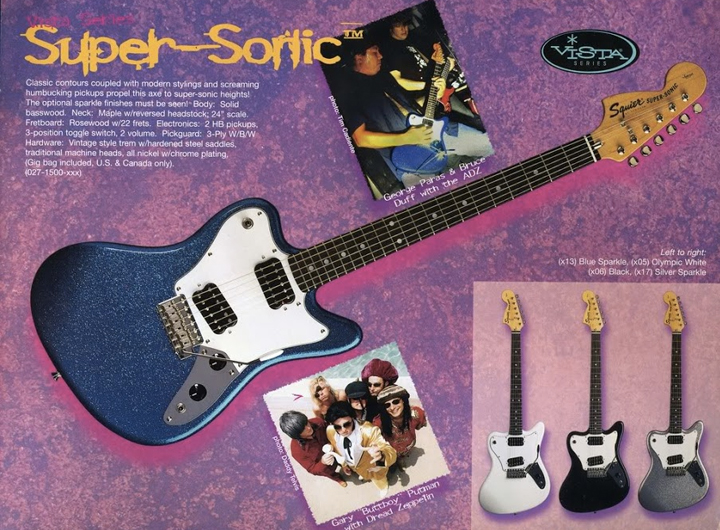
Squier Venus Six- and 12-string Guitars
The Venus was designed as a quasi-signature model for Courtney Love, then the rhythm guitarist in the band Hole. The shape and configuration of the guitar was based on a personal instrument of Love's, a "Mercury" model created by Atlanta, Georgia-based luthiers Danny Babbitt and Tim George.
Although visually similar to the Mercury, the Venus was significantly different in construction, having a bolt on neck and the standard Fender six-in-line tuning machines as opposed to the Mercury's set-neck construction with three-a-side tuners. Notably, the Venus has a rounded headstock very similar in shape to that used on Fender's acoustic guitars and Coronado electrics of the 1960s and early 1970s. The Venus was also available in a 12-string version, which employed bifurcated pickups similar to those used on the Fender Electric twelve string model of the 1960s.

Go Your Own Way
Throughout its existence, one of the hallmarks of the Squier brand has been its experimentation, trendiness and even whimsy. Freed from the confines of having to live up to the historical designs of American-made Fenders, Squier has had the freedom to go its own way, often with some very interesting and economical results. At times this is manifested itself in guitars with designs rooted in the ephemera of popular culture.
A good example of this is the series of Stratocasters and Telecasters produced in 2006 with graphics designed by street artist Shepard Fairey based on his "Obey" series of artworks. At the more light-hearted end of the spectrum, in the same year Squier released a series of models of Stratocaster based on Sanrio's "Hello Kitty" character. Although these "Hello Kitty" guitars were aimed at young female players, they were ironically and enthusiastically adopted by rock guitarists such as Slash and Dave Navarro.
The story of Squier and Fender Japan represents an important chapter in the history of one of the most important makers of electric guitars. What started out as a stop-gap measure to fight foreign competition and keep production of Fender instruments going while the company transitioned to new premises and management (as told in part one), has since become one of the biggest musical instrument manufacturing success stories of the last 50 years. While Squier may have started out as a budget brand, their high quality yet economical instruments continue to find many fans.
Matthew W. Hill is a native of Los Angeles who has been mostly resident in Scotland since 1994. He holds a BMus (Hons, 1st class) in composition from Napier University and a MMus and PhD in organology, the study of musical instruments, from the University of Edinburgh. A founding curator of the Musical Instrument Museum in Phoenix, Arizona, he is also curator of the John C. Hall collection of musical instruments in Santa Ana, California. His book “The Rise of the Electric Guitar, 1740-1939,” will be published in 2016 by the University Press of Mississippi. Besides academic pursuits, he has enjoyed a varied musical life that includes being a Nashville session player, art music composer, double bassist and guitarist.




